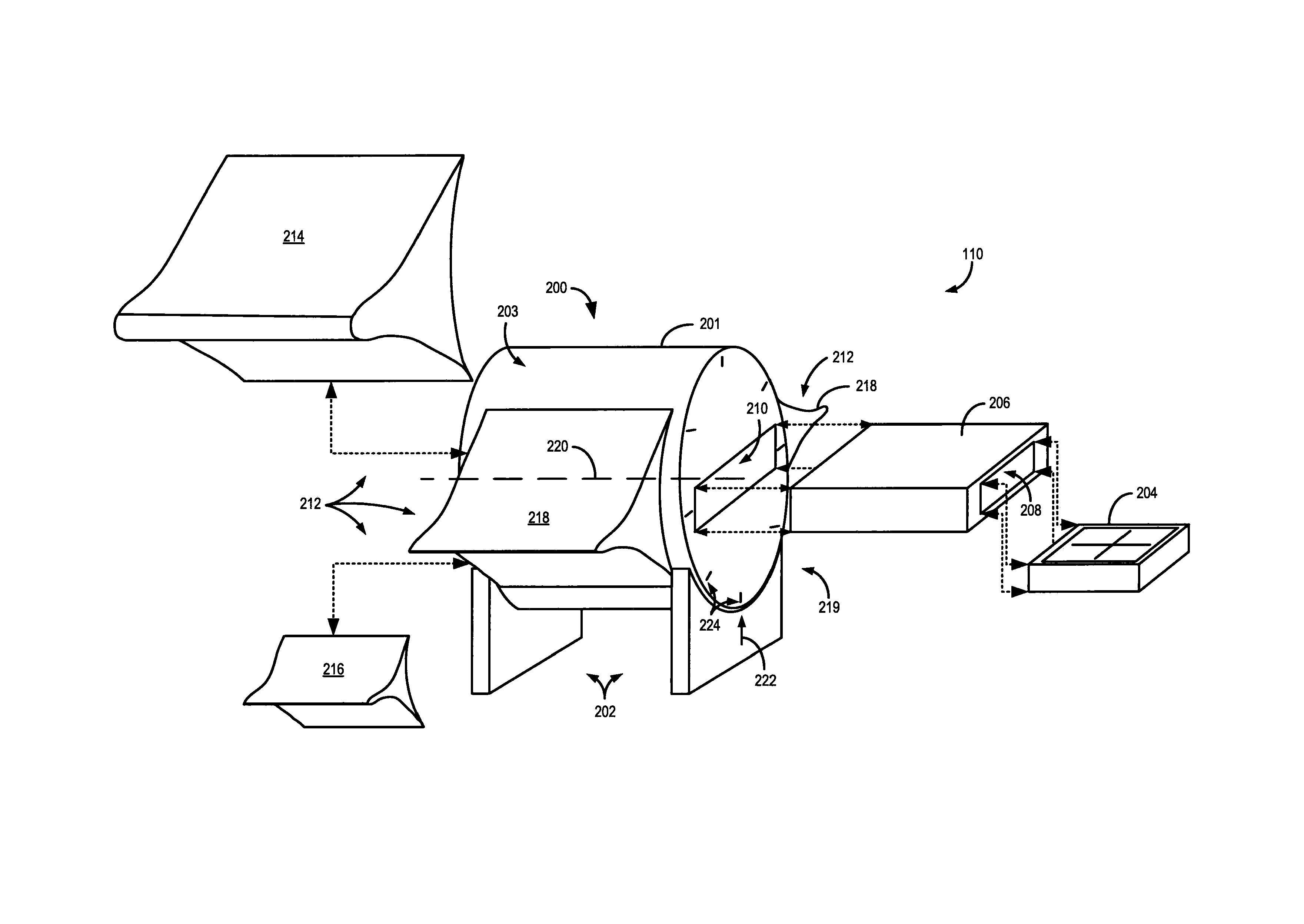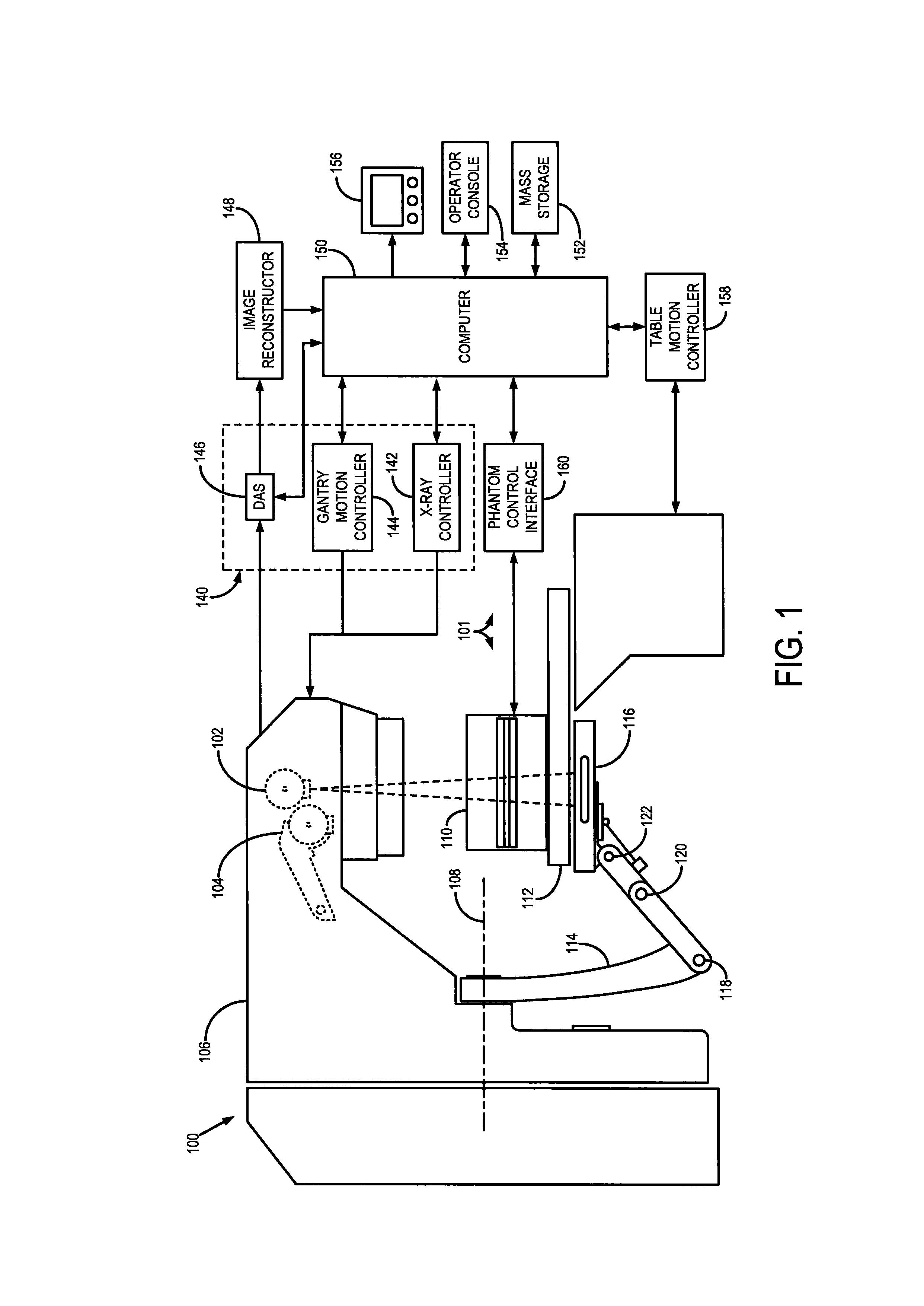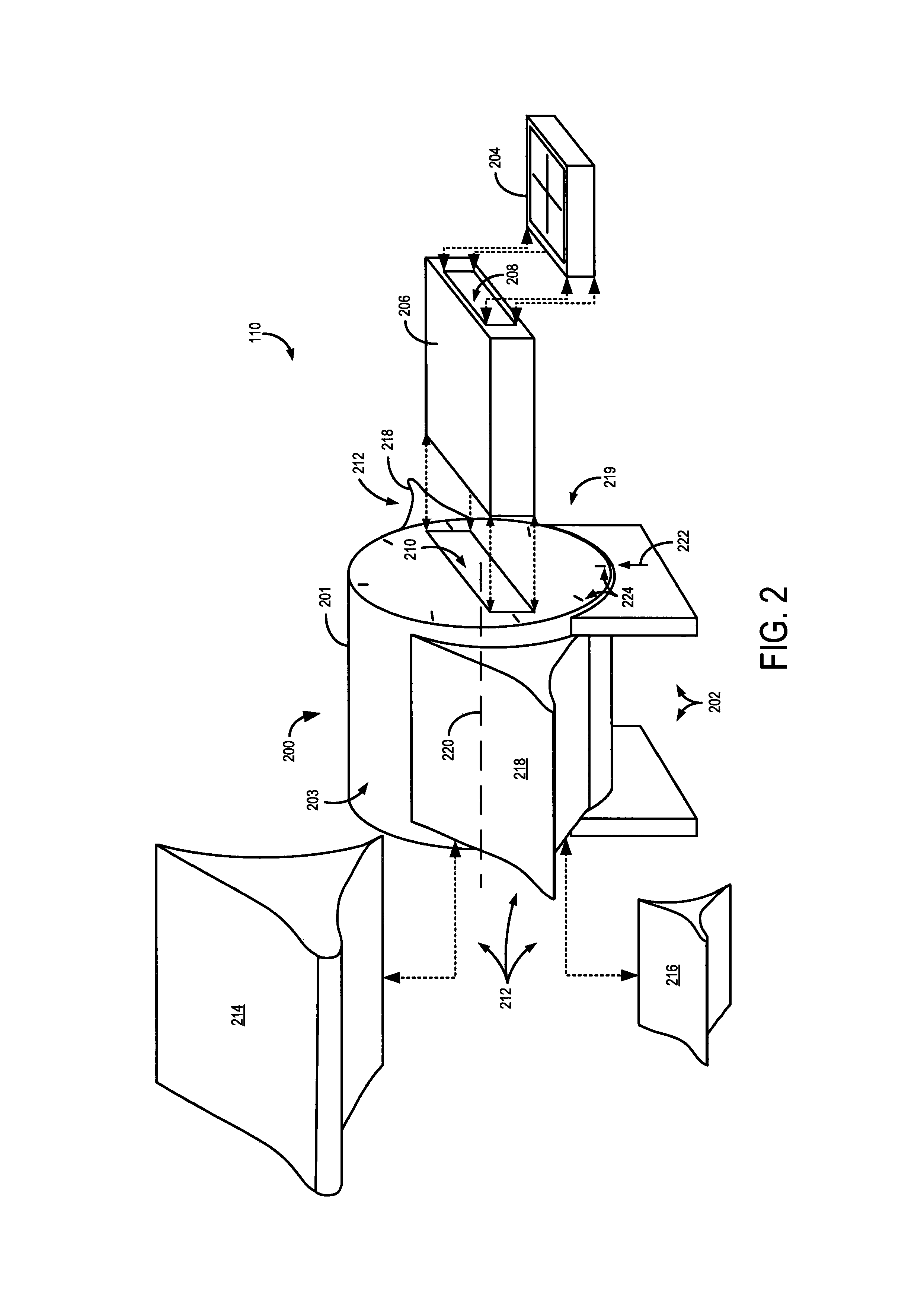System and method for improved radiation dosimetry
a radiation dosimetry and radiation system technology, applied in the field of radiation systems and methods, can solve the problems of difficult to obtain the desired level of accuracy, substantial potential for the subject to receive undesired radiation doses, and limited radiation toxicity capacity of high-dose treatments, so as to improve the accuracy of 3d dosimetry information.
- Summary
- Abstract
- Description
- Claims
- Application Information
AI Technical Summary
Benefits of technology
Problems solved by technology
Method used
Image
Examples
Embodiment Construction
[0020]Referring to FIG. 1, an exemplary image-guided radiation therapy (IGRT) system 100 is illustrated. The succeeding description of the invention is made with respect to the IGRT system 100; however, it should be readily appreciated by those skilled in the art that the present invention can be readily used with any number of radiation-delivery systems. For example, the present invention is readily designed for use with intensity modulated radiation therapy (IMRT) systems, stereotactic radiosurgery systems such as the CyberKnife® system (Accuray, Sunnyvale, Calif.), traditional gantry-mounted linear accelerator (“linac”) systems, and other radiation-delivery and / or imaging systems that can benefit from the use of 3D dose measurement and quality assurance (QA) capabilities. Specifically, as will be described, the present invention provides a dosimetry quality assurance (QA) system 101 that can be configured and adapted for use with any of a variety of radiation sources and can be a...
PUM
 Login to View More
Login to View More Abstract
Description
Claims
Application Information
 Login to View More
Login to View More - R&D
- Intellectual Property
- Life Sciences
- Materials
- Tech Scout
- Unparalleled Data Quality
- Higher Quality Content
- 60% Fewer Hallucinations
Browse by: Latest US Patents, China's latest patents, Technical Efficacy Thesaurus, Application Domain, Technology Topic, Popular Technical Reports.
© 2025 PatSnap. All rights reserved.Legal|Privacy policy|Modern Slavery Act Transparency Statement|Sitemap|About US| Contact US: help@patsnap.com



